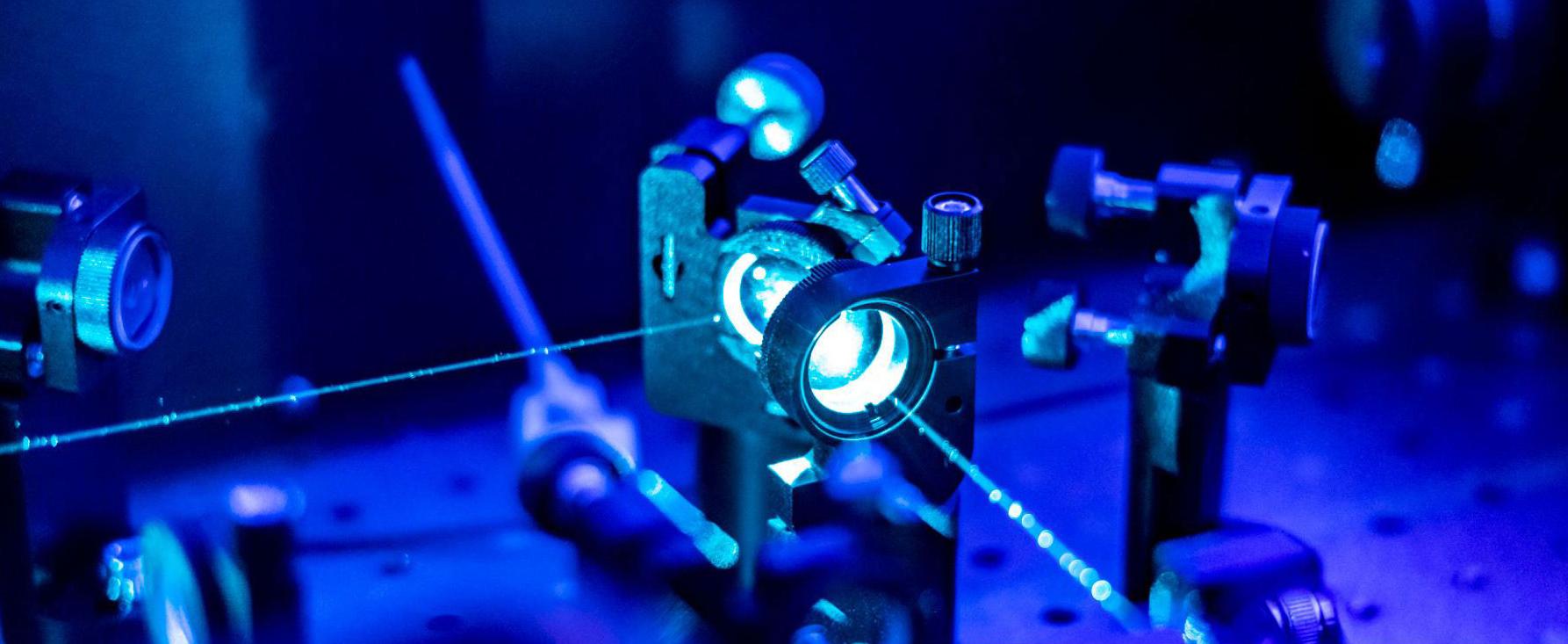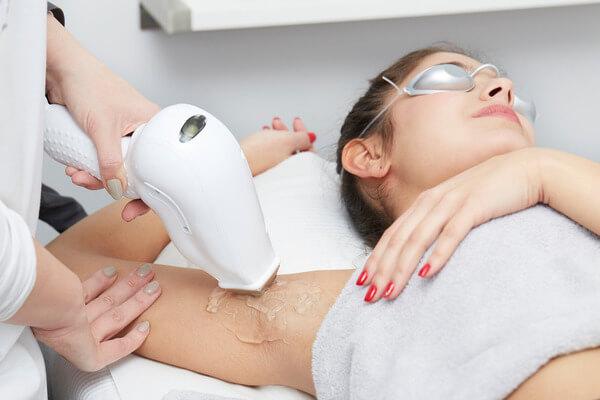Unwanted hair can be a persistent challenge for everyone, but those with darker skin tones often face unique obstacles when seeking effective and safe hair removal methods. Laser hair removal, a popular solution, initially catered mostly to lighter skin tones, leaving many with melanin-rich complexions wary of potential side effects like hyperpigmentation and burns. However, advances in technology and a deeper understanding of diverse skin needs have bridged this gap, making laser hair removal a viable and safe option for all. This article aims to empower you with essential tips and insights to navigate your laser hair removal journey confidently and achieve smooth, radiant skin without compromising safety. Whether you’re a first-timer or seeking to refine your approach, these tips will help ensure that your experience is as effective and uplifting as possible.
Table of Contents
- Choosing the Right Laser Technology for Darker Skin Tones
- Pre-Treatment Skincare for Optimal Results
- Managing Post-Treatment Care to Prevent Hyperpigmentation
- Understanding Possible Side Effects and How to Mitigate Them
- Best Practices for Long-Lasting Smoothness and Safety
- Q&A
- In Summary

Choosing the Right Laser Technology for Darker Skin Tones
When it comes to laser hair removal for darker skin tones, choosing the right technology is crucial in achieving safe and effective results. Historically, laser treatments were optimized for lighter skin tones, leading to a higher risk of burns or hyperpigmentation for individuals with darker skin. However, advancements in laser technology are bridging this gap, allowing you to enjoy the benefits of laser hair removal confidently and safely.
| Laser Type | Skin Compatibility | Ideal Usage |
|---|---|---|
| Nd:YAG | Darker Skin Tones | Body and Face |
| Diode | All Skin Types | Heavier Hair Growth |
Nd:YAG lasers are often recommended for darker skin tones due to their longer wavelength, which penetrates deeper into the skin and bypasses melanin in the epidermis. This dramatically reduces the risk of skin damage while effectively targeting the hair follicle. Diode lasers also perform well across various skin types. They can treat coarser hair effectively, making them a great option for those who may have denser hair growth.
Before selecting a laser type, consult with a certified dermatologist to evaluate your skin and hair type. This step ensures you’ll be matched with the most suitable technology. Also, look for clinics that offer modern laser systems equipped with cooling mechanisms, as these systems can further minimize the risk of skin damage and enhance comfort throughout the procedure. Remember, the right technology paired with an expert practitioner will yield the best results!

Pre-Treatment Skincare for Optimal Results
“`html
To ensure that your skin is in the best possible condition for laser hair removal, it’s crucial to adopt a robust pre-treatment skincare regimen. Proper skin care helps minimize the risk of side effects, enhances your treatment outcomes, and can even shorten recovery periods. Always start by examining your skincare products and routine to ensure they are compatible with your upcoming treatments.
Here are a few essential steps to follow:
- Hydrate: Keep your skin well-moisturized in the weeks leading up to your appointment. Hydration helps your skin recover faster and reduces irritation.
- Gentle Cleansing: Use a mild, fragrance-free cleanser to avoid any potential sensitivity or reactions. These cleansers are gentle and effective without stripping essential oils.
- Avoid Exfoliating: Refrain from using physical or chemical exfoliants at least a week before your treatment to prevent any unexpected skin sensitivity.
| Skincare Step | Why It’s Important |
| Hydrate | Reduces irritation and improves skin recovery. |
| Gentle Cleansing | Prevents sensitivity and ensures skin is prepped. |
| Avoid Exfoliating | Reduces the risk of increased sensitivity or reactions. |
Remember to avoid sun exposure and tanning products, as tanned skin is more prone to side effects during laser hair removal. Always apply a high-SPF sunscreen if you need to be outside and consider wearing protective clothing or hats for additional coverage.
Consult with your dermatologist about your current skincare products to ensure they won’t interfere with laser treatments. Ingredients like retinoids, glycolic acids, and Vitamin C serums may need to be paused temporarily to avoid any adverse reactions. Being proactive with your skincare regimen will set the stage for a smoother, more successful laser hair removal experience.
“`
Managing Post-Treatment Care to Prevent Hyperpigmentation
Post-treatment care is crucial for ensuring that darker skin tones maintain their rich and even complexion following laser hair removal. One key aspect to consider is the use of sun protection. The skin tends to be more sensitive after laser treatments, making it essential to avoid direct sunlight. Apply a broad-spectrum sunscreen with at least SPF 30, and wear wide-brimmed hats or protective clothing when going outdoors.
Keeping the treated area properly hydrated can significantly reduce the risk of developing hyperpigmentation. Opt for fragrance-free, hypoallergenic moisturizers that offer excellent hydrating properties. Ingredients such as aloe vera, hyaluronic acid, and glycerin are beneficial as they soothe and nourish the skin. Hydrated skin heals faster and reduces the likelihood of pigmentary changes.
Avoid using harsh skincare products that include retinoids, alpha hydroxy acids (AHAs), or beta hydroxy acids (BHAs) for at least a week post-treatment. These ingredients can exacerbate skin sensitivity and increase the risk of hyperpigmentation. Instead, focus on gentle, non-comedogenic products that support the healing process. Here’s a quick guide:
- Cleanser: Mild, sulfate-free.
- Toner: Alcohol-free, hydrating.
- Moisturizer: Fragrance-free, soothing.
Incorporating natural oils like rosehip oil or lavender oil can also be beneficial. These oils contain properties that not only moisturize the skin but also promote an even skin tone. However, always do a patch test before applying to larger areas to ensure you’re not allergic. Moreover, stay adequately hydrated by drinking plenty of water, as it promotes overall skin health and aids in recovery.
| Aspect | Recommendations |
|---|---|
| Sun Protection | SPF 30+, hats, protective clothing |
| Hydration | Fragrance-free moisturizer, hydrating ingredients |
| Skincare Products | Avoid retinoids, AHAs, BHAs |
| Natural Oils | Rosehip, lavender (patch test first) |

Understanding Possible Side Effects and How to Mitigate Them
While laser hair removal can be incredibly effective for those with darker skin tones, it’s essential to be aware of the potential side effects and ways to mitigate them. Since melanin-rich skin can be more sensitive to the laser’s light, side effects such as hyperpigmentation and hypopigmentation might occur. Hyperpigmentation refers to dark spots, whereas hypopigmentation leads to lighter patches. To minimize these risks, it’s advisable to select a clinic that uses technology designed for darker skin tones, such as Nd:YAG lasers, which target hair follicles with greater precision.
Here are some practical tips to help mitigate possible side effects:
- Patch Tests: Always request a patch test prior to your first full treatment. This helps in evaluating how your skin responds and allows adjustments in laser settings if necessary.
- Sun Protection: Ensure you use a broad-spectrum sunscreen consistently. Protecting your skin from UV exposure before and after treatment can prevent pigmentation issues.
- Moisturize: Keep your skin hydrated by regularly using a good moisturizer. This can help in minimizing irritation and promoting faster healing.
- Avoid Certain Products: Refrain from using retinoids or glycolic acid products a few days before and after treatment as they can increase skin sensitivity.
If you experience any adverse effects, it’s crucial to have a plan for prompt and effective care. Mild side effects, such as redness and swelling, are common and usually subside within a few hours to a couple of days. For persistent issues, consider these steps to manage them:
| Symptom | Action |
|---|---|
| Redness | Apply a cold compress and aloe vera gel. |
| Swelling | Use anti-inflammatory creams and ice packs. |
| Hyperpigmentation | Consult with a dermatologist for appropriate creams or treatments. |
In addition to these methods, engaging with your skincare specialist can provide tailored options aligned with your skin’s unique needs. Personalized plans may include a series of treatments spread out over time to ensure safety and efficacy. When in doubt, never hesitate to ask questions and fully understand the procedures. After all, ensuring your skin’s health while achieving desired results should always be a balanced and informed process, empowering you to embrace your true beauty confidently.

Best Practices for Long-Lasting Smoothness and Safety
Ensuring your laser hair removal journey is both effective and safe requires a few strategic best practices. One of the most crucial elements is choosing the right technology. Devices such as Nd:YAG lasers are tailored for darker skin tones, reducing the risk of hyperpigmentation and burns. Before committing, request a patch test to evaluate how your skin reacts to the treatment. This step not only ensures your safety but also helps set realistic expectations for the outcomes.
Pre-treatment care is essential for optimizing results and minimizing adverse reactions. In the days leading up to your appointment, avoid sun exposure and tanning beds, as darker skin can become more sensitive and prone to complications.
- Refrain from waxing or plucking
- Shave the treatment area 24-48 hours before your session
- Keep your skin moisturized
These measures prepare your skin for the laser, making the treatment process smoother and safer.
| Before Session | During Session | After Session |
|---|---|---|
| Avoid Sun Exposure | Communicate Sensitivity | Apply Aloe Vera Gel |
| Shave Treatment Area | Follow Technician’s Advice | Stay Hydrated |
During the treatment, it’s paramount to communicate any discomfort or unusual sensations you experience. Monitor your pain level and inform your technician as real-time feedback can help adjust the laser settings for your safety. Proper use of cooling gels and ice packs during the procedure can alleviate any immediate discomfort, aiding in both pain management and skin protection.
Post-treatment care is equally important and should not be neglected. To enhance healing and maintain smoothness, follow these guidelines:
- Avoid direct sunlight and apply SPF 30 or higher
- Use gentle, fragrance-free moisturizers
- Refrain from engaging in intense physical activities for at least 24 hours
- Keep the treated area clean and dry
Post-procedure care not only ensures your skin heals properly but also maximizes the longevity of your laser hair removal results, leaving you with smooth, radiant skin.
Q&A
Q: Why is laser hair removal different for darker skin tones?
A: Laser hair removal relies on the contrast between the pigment of the hair and the skin. Because darker skin tones have more melanin, there’s a higher risk of the laser targeting the skin’s pigment, which can cause burns or hyperpigmentation. However, modern advancements in laser technology have made it much safer and more effective for all skin tones, including darker ones.
Q: What type of laser technology is best suited for darker skin tones?
A: The Nd:YAG laser and diode lasers are considered the best options for darker skin tones. These lasers have longer wavelengths that bypass the melanin in the skin and focus more accurately on the hair follicles, reducing the risk of skin damage.
Q: How can I prepare my skin before a laser hair removal session?
A: Preparing your skin is crucial for a successful and safe laser hair removal session. Ensure your skin is clean and free of any lotions, oils, or cosmetics. Avoid sun exposure and tanning for at least two weeks before your appointment, as tanned skin increases the risk of burns. Refrain from waxing or plucking hair, as the laser needs to target the hair follicles.
Q: What should I expect during and after the procedure?
A: During the procedure, you might feel a mild stinging sensation, similar to the snap of a rubber band. A cooling device or gel is typically used to soothe the skin. Post-procedure, expect some redness and slight swelling, which should subside within a few hours. Apply aloe vera or a soothing cream as recommended by your practitioner and avoid sun exposure.
Q: How many sessions will I need for optimal results?
A: The number of sessions varies depending on individual hair growth cycles, the area being treated, and the laser type used. Generally, most people require between 6 to 8 sessions spaced 4 to 6 weeks apart for optimal results.
Q: Are there any specific aftercare tips for darker skin tones?
A: Yes, diligently follow aftercare instructions to minimize any potential side effects. Keep the treated area moisturized, avoid sun exposure, and use a broad-spectrum sunscreen if you’re going outdoors. Refrain from hot baths, saunas, or heavy exercise for at least 24-48 hours to prevent irritation.
Q: Can I achieve permanent hair reduction with laser hair removal?
A: While laser hair removal significantly reduces hair growth, achieving completely permanent hair reduction can vary. Some people may experience finer, lighter hair that grows back over time, requiring maintenance sessions. However, many see a lasting reduction in hair growth that greatly eases daily hair management.
Q: What are key considerations when choosing a laser hair removal clinic?
A: When selecting a clinic, prioritize clinics with experienced practitioners who specialize in treating darker skin tones. Read reviews and ask about the types of lasers they use. A reputable clinic will conduct a detailed consultation and possibly a patch test to ensure safety and efficacy for your skin type.
Q: How can I ensure my laser hair removal journey is a positive one?
A: Stay informed and communicate openly with your practitioner about your skin concerns and goals. Follow pre- and post-treatment instructions diligently and be patient as results take time. With the right approach and a positive mindset, you can enjoy the benefits of smoother, hair-free skin safely and effectively.
In Summary
mastering the art of laser hair removal for darker skin tones requires a meticulous blend of the right technology, specialized expertise, and diligent aftercare. Embrace the journey with confidence, knowing that modern advancements in laser technology have made safe and effective treatments more accessible than ever before. By following these essential tips, you can achieve smoother, hair-free skin while minimizing potential risks. Remember, investing in your skin is an invaluable commitment to self-care and empowerment. Step forward boldly, and let your radiant, flawless skin tell a story of resilience and beauty.






